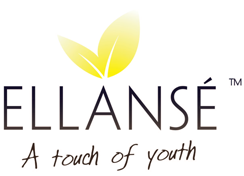 Anti-ageing Cosmeceuticals
Anti-ageing Cosmeceuticals
Cosmeceuticals are the marriage of cosmetics and pharmaceuticals. Cosmeceuticals do not act exclusively on the surface of the skin but achieve an effect deep down in the skin. The skin‘s different needs and requirements are specifically targeted, leading to an immediate and long-term improvement in the skin profile.
Some Common Types of Cosmeceutical Ingredients
- Alpha Hydroxy Acids
- Antioxidants
- Botanicals
- Depigmenting Agents
- Exfoliants
- Moisturizers
- Peptides
- Retinoids
- Sunscreens
Alpha Hydroxy Acids (AHAs)
Also referred to as fruit acids, they are a common ingredient found in cosmeceutical products. Examples include:
- Citric acid
- Glycolic acid
- Lactic acid
- Malic acid
- Pyruvic acid
- Tartaric acid
AHAs improve skin texture and reduce the signs of aging by promoting cell shedding in the outer layers of the epidermis and by restoring hydration. The mechanism of action is not completely understood. One hypothesis suggests that AHAs reduce the calcium ion concentration in the epidermis and, through chelation, remove the ions from the cell adhesions, which are thereby disrupted, resulting in desquamation. This is enhanced by cleavage of the endogenous stratum corneum chymotryptic enzyme on the cadherins, which are otherwise protected from proteolysis by conjugation with calcium ions. The resulting reduction of the calcium ion levels tends to promote cell growth and slow cell differentiation, thus giving rise to younger looking skin.
Antioxidants
Antioxidants reduce free-radical damage, thereby preventing impairment at the cellular level. They inhibit inflammation, which leads to collagen depletion, and they offer protection against photodamage and skin cancer.
Common antioxidants include:
- alpha-lipoic acid (ALA),
- L-ascorbic acid (vitamin C),
- niacinamide (vitamin B3),
- N-acetyl-glucosamine (NAG),
- α-tocopherol, and
- ubiquinone (CoQ10).
Alpha-lipoic Acid (ALA).
Alpha-lipoic acid has anti-inflammatory properties and acts as an exfoliant. In a split face study, topical 5% ALA applied b.i.d. for 12 weeks reduced skin roughness, lentigines and fine wrinkles. This agent does not protect against UV-induced erythema or reduce the number of sunburn cells.
L-ascorbic Acid (Vitamin C).
There is clinical data to support the use of topical vitamin C to improve fine lines and reduce both pigmentation and inflammation, and many cosmeceutical formulations contain this antioxidant. However, many of these formulations are not effective on the skin because:
• the concentration of L-ascorbic acid is too low.
• exposure of the product to air and light compromises the stability of the product.
• the L-ascorbic acid molecule (in the form of an ester or a mixture of isomers) cannot be absorbed or metabolized effectively by the skin.
In high enough concentrations (i.e., at least 10%) of the nonesterified, optimal isomer, this antioxidant does inhibit UV damage. It is important to note that stabilizing ascorbic acid presents many formulary challenges; however, a formulation that has an acid pH of approximately 3.5 may optimize vitamin C absorption. Newer formulations of stabilized ascorbic acid derivatives may prove to be more efficacious.
Niacinamide (Vitamin B3)
Niacinamide is a potent antioxidant that is generally well tolerated. It improves the lipid barrier component of the epidermis, thus reducing transepidermal water loss, and acts as an inhibitor of melanosome transfer, resulting in reduced hyperpigmentation. Studies have revealed significant reduction in fine lines and wrinkles, hyperpigmented spots, red blotchiness, and skin sallowness, as well as improved skin elasticity.
N-acetyl-glucosamine (NAG).
NAG is a more stable form of glucosamine, and may prevent new signs of photodamage from occurring, and fade existing imperfections by interrupting the chemical signals that promote melanin production. A placebo-controlled study comparing 3.5% NAG with the combination of 3.5% NAG plus 3.5% niacinamide on hyperpigmented spots showed a superior reduction in pigmentation in the combination treatment group vs. both the placebo and NAG only groups. When combined they produced synergistic effects.
α-tocopherol (Vitamin E).
When taken orally, α-tocopherol protects membrane lipids from peroxidation. It has been shown to reduce sunburn cells after UV exposure, neutralize free radicals, and act as a humectant. Its activity can be renewed by combining it with a vitamin C preparation. As a component in topical formulations, it, like unmodified L-ascorbic acid, has shown some limited efficacy; however, when a stable formulation delivers a high concentration of the nonesterified, optimal isomer of this antioxidant, vitamin E does inhibit the acute UV damage of erythema, sunburn, and tanning, as well as chronic UV photoaging and skin cancer. Because vitamin C regenerates oxidized vitamin E, the combination in a cosmeceutical formulation is synergistic - particularly with regard to UV protection.
Ubiquinone (CoQ10).
Ubiquinone is a naturally occurring, fat-soluble antioxidant and there is good in vitro evidence that it can suppress fibroblast production of UVA-induced collagenase, thereby reducing collagen breakdown. It has been shown to be effective against UVA mediated oxidative stress in human keratinocytes. Ubiquinone was also able to significantly suppress the expression of collagenase in human dermal fibroblasts following UVA irradiation. Another study showed that ubiquinone can strongly inhibit oxidative stress in the skin induced by UVB. It is an effective antioxidant protecting the dermal matrix from both intrinsic and extrinsic aging.
Botanicals
Botanicals comprise the largest category of cosmeceutical additives found in the marketplace today. Their use is unregulated and often unsupported by science and their purported therapeutic properties remain largely unexplored. Some botanicals that may benefit the skin include: green tea extract, ferulic acid, and grape seed extract.
Green Tea Extract.
Research has shown that green tea (Cammelia sinensis) polyphenols are potent suppressors of carcinogenic activity from UV radiation and can exert broad protection against other UV-mediated responses, such as sunburn, immunosuppression, and photoaging.
Ferulic Acid.
This compound, which is derived from plants, is considered to be a potent antioxidant, and has been shown to provide photoprotection to skin. Furthermore, when ferulic acid is combined with vitamins C and E, the product has been shown to provide substantial UV protection for human skin. Moreover, Murray et al. report that because its mechanism of action is different from sunscreens, ferulic acid could be expected to supplement the sun protection provided by sunscreens.[
Grape Seed Extract.
This botanical has been established as a potent antioxidant and has been shown to speed wound contraction and closure. Topical application of grape seed extract has also been shown to enhance the sun protection factor in humans.
Depigmenting Agents
Skin-lightening agents added to product formulations have become increasingly popular. Common depigmenting ingredients include:
- hydroquinone,
- ascorbic acid (vitamin C),
- kojic acid, and
- licorice extract (glabridin).
Hydroquinone.
Hydroquinone has been the agent of choice for skin lightening. However, there are concerns over exogenous ochronosis and permanent depigmentation, as well as possible carcinogenicity, and it has been banned as an over-the-counter depigmenting agent in Europe, Australia and Japan. The US FDA has proposed concentrations between 1.5% and 2% in skin lighteners. A recent report suggested that this concern has been based mainly on studies with animal models utilizing long-term exposure at high dosages. Routine topical application may pose no greater risk than that from levels present in common foods.
Ascorbic Acid (Vitamin C).
Ascorbic acid is a naturally occurring antioxidant found in citrus fruits and leafy green vegetables. It is hydrophilic, so skin penetration is low.
Kojic Acid.
Kojic acid is a less commonly used bleaching agent. When combined with dipalmitate, there is improved skin penetration and greater stability, but there is little research to support its efficacy.
Licorice Extract (Glabridin).
Several studies on melasma have shown good efficacy with only mild irritation that disappeared with discontinuation.
Exfoliants
Exfoliants promote skin turnover by removing adherent cells in the stratum corneum. Common exfoliants found in cosmeceutical preparations include salicylic acid (SA), lactic acid, and glycolic acid. There are concerns that repeated use of SA and AHAs could cause the dermis and epidermis to be more vulnerable to penetration by UV radiation. Therefore, patients should be advised to use adequate sun protection. The Cosmetic Ingredient Review Expert Panel concluded that SAs are safe to use when formulated to avoid skin irritation and to be non-photosensitizing, or when directions for use include the daily application of sun protection. Sufficient data is not available to establish a limit on SA concentration or to identify the minimum pH of formulations to inhibit skin irritation.
Moisturizers
Moisturizers restore water content to the epidermis, and provide a soothing protective film. They improve the appearance and tactile properties of dry and aging skin, restore the normal barrier function of the skin, and reduce the release of inflammatory cytokines. Moisturizers comprise an important therapeutic component in the management of various skin conditions (e.g., eczema, psoriasis, pruritus, and aged skin).
Topical Peptides
Topical peptides are regarded as cellular messengers that are formed from amino acids and are designed to mimic peptide fragments with endogenous biologic activity. These pentapeptides (e.g., KTTKS) are comprised of a subfragment of type I collagen propeptide, and play a role in signalling fibroblasts to produce collagen in the skin, which can improve the appearance of wrinkles. One variation, the palmitoyl pentapeptide known as Pal-KKTKS (Matrixyl™, Sederma) was tested in a controlled, double-blind, left-right randomized, split-face study of 93 women between 35 and 55 years of age who had Fitzpatrick I-III type skin. Pal-KTTKS concentration was 3ppm; both groups were treated twice daily for 12 weeks. Improvements in wrinkle appearance and length were observed.
Retinoids
Retinoids are among the most common ingredients found in cosmeceuticals. In fact, they are the most studied and have the most data behind them. They consist of natural and synthetic derivatives of vitamin A that reduce hyperpigmentation and inhibit enzymes from breaking down collagen. Many of their cosmeceutical claims are based on data derived from studies on tretinoin and other classes of retinoid drugs. Some key retinoids include retinoic acid (tretinoin), retinol, retinaldehyde.
Retinoic Acid (Tretinoin).
There is extensive literature on the use of tretinoin, which is considered to be one of the most potent compounds for treating the signs of aging and/or photodamaged skin, including fine lines, hyperpigmented spots, and wrinkles. However, side-effects such as burning and scaling have limited its acceptance. In order to minimize these side-effects, various novel drug delivery systems are being developed.
Retinol (Vitamin A).
Retinol is oxidized into retinaldehyde and then into retinoic acid, the biologically active form of vitamin A. In vivo studies showed that topical retinol had only a modest retinoid-like biologic activity compared with topical retinaldehyde and retinoic acid. Two randomized, controlled trials reported significant improvement in fine wrinkles after 12 and 24 weeks of treatment, respectively.
Retinaldehyde.
Retinaldehyde is viewed in a large part as an intermediate form during the conversion of retinol to retinoic acid. Studies have shown that it does have activity in human skin. Moreover, some studies have reported that this retinoid can produce significant clinical improvement in the appearance of fine and deep wrinkles.[
Sunscreens
Sunscreens are the single most important cosmeceutical, because they protect skin against solar radiation, which is the most important damaging environmental agent. As a result, they help to prevent the signs of aging. To be effective, sunscreens should provide broad spectrum coverage that includes both UVA and UVB blocking agents to inhibit photoaging and be part of a daily skin care regimen. Sunscreens contain active ingredients that act as ultraviolet filters. The recommended application is 2mg/cm2, though this is rarely achieved in real-life practice. Labeling changes proposed by the US FDA on sunscreen products are forthcoming.









